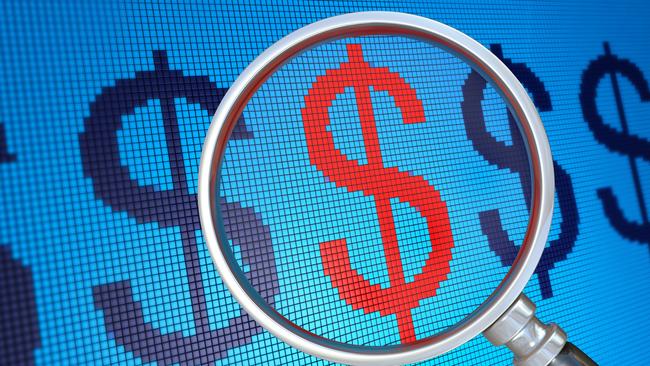CBA to CIMIC: Lessons from reporting season
Share price reactions to earnings reports have shown a significant appetite for profit-taking.

Share price reactions to earnings reports have shown a significant appetite for profit-taking.
While supported by buoyant US and Chinese markets after hitting a fresh 11-month high of 6901 points on Monday, the S&P/ASX 200 index has stalled for the past two days.
No doubt the rally will resume before long as conditions are ripe for a “melt-up” above the record high of 7197.2 amid continuing unprecedented fiscal and monetary policy stimulus to offset the effect of the pandemic.
But a week into the February reporting season, investors seem to be switching from leaders to laggards after their earnings reports, booking some profit in the process, after a 57 per cent rise in the S&P/ASX 200 index since March and much stronger gains in some individual stocks.
Commonwealth Bank
CBA is the latest case in point. CBA shares fell 1.5 per cent, even as analysts praised its interim result, including a cash profit of $3.886bn that was 3.4 per cent above consensus, much lower than expected bad and doubtful debts and a much bigger than expected interim dividend. CBA shares had surged 67 per cent since March and 42 per cent since September.
There were also signs of profit-taking in the other banks after strong gains in recent months.
Still, UBS analyst Jon Mott said CBA’s solid revenue recovery in the December quarter, driven by better net interest margins, should give CBA good momentum into the June half-year.
“Expect consensus upgrades from better revenue, lower credit impairment charges and potentially buybacks,” he said.
CIMIC
CIMIC was another case in point, although admittedly its results and outlook were worse than expected. CIMIC shares fell 17 per cent after rising 40 per cent in the past four months.
Bell Potter’s Richard Coppleson said CIMIC was one of his top short picks for the year.
IAG, on the other hand, was flat since July and its shares managed a 4.6 per cent rise after its cash earnings rose 21.6 per cent to $462m and analysts saw encouraging trends in premium price rises and insurance margins. The IAG lift was an encouraging break above its 200-day moving average for the first time since late 2019. But Mineral Resources shares struggled for traction after quadrupling since March.
Bounce Back
It was a similar story as Challenger Financial shares tumbled 15 per cent, despite results that were good enough to see two brokers upgrade their ratings.
Challenger shares had more than doubled in the preceding five months so were ripe for profit-taking, but they appeared to be getting back on track with a 4.7 per cent bounce on Wednesday.
Another standout example was Boral. Its shares tumbled 7.4 per cent on the day of its report on Tuesday, after having quadrupled since March. The results weren’t upsetting enough to cause any brokers to downgrade, but there was clearly profit-taking going on.
The share price response to results so far this week sets up an interesting dynamic for the short-term share price moves of companies reporting on Thursday.
Of course, results and capital management will matter to some extent, but they could be eclipsed by profit-taking.
Companies with big share price gains in recent months, such as Downer, Magellan and GUD, could be hit by profit-taking unless their results shoot the lights out, while companies with shares that have underperformed recently — such as Unibail, Newcrest, AMP and ASX — may find it easier to rally on their results.
Strategists have also warned investors that so-called “COVID winners” may face profit-taking.
On another note, investors should be aware that J Capital Research has warned via Twitter that it will publish a short-selling recommendation about a listed company “tomorrow”, which presumably means Thursday.
The tweet was clearly aimed at building interest in the report to trigger a share price sell-off. That way their hedge fund clients will be able to profit on their pre-existing short positions.
Short selling has been more risky since the central banks and governments opened the monetary and fiscal floodgates last year. That was evident in the social media-driven short squeeze on US companies such as GameStop, which forced a US hedge fund to take a major loss on that stock.
J Capital tends to short high-PE stocks with China exposure and questionable management.
Possibilities suggested by traders include Technology One, Corporate Travel and Treasury Wine Estates.








To join the conversation, please log in. Don't have an account? Register
Join the conversation, you are commenting as Logout